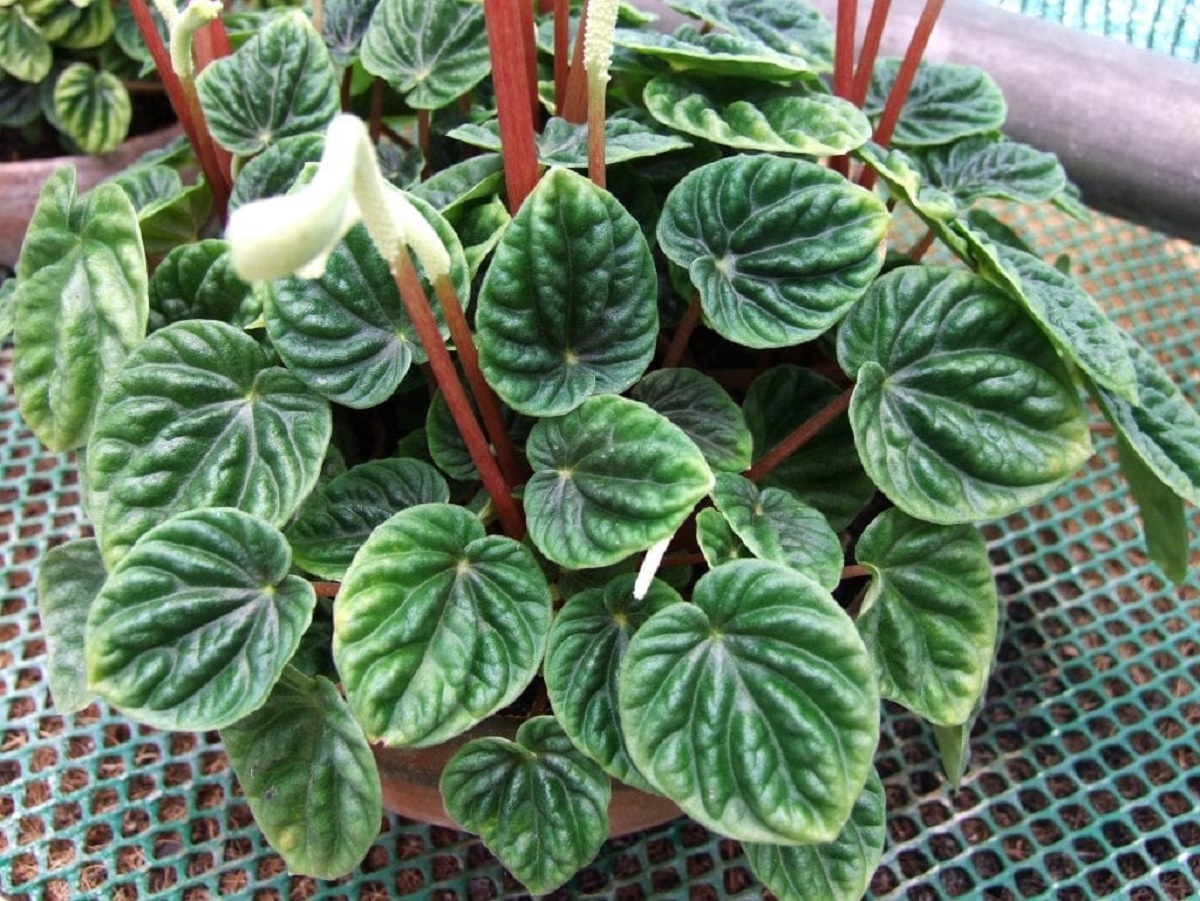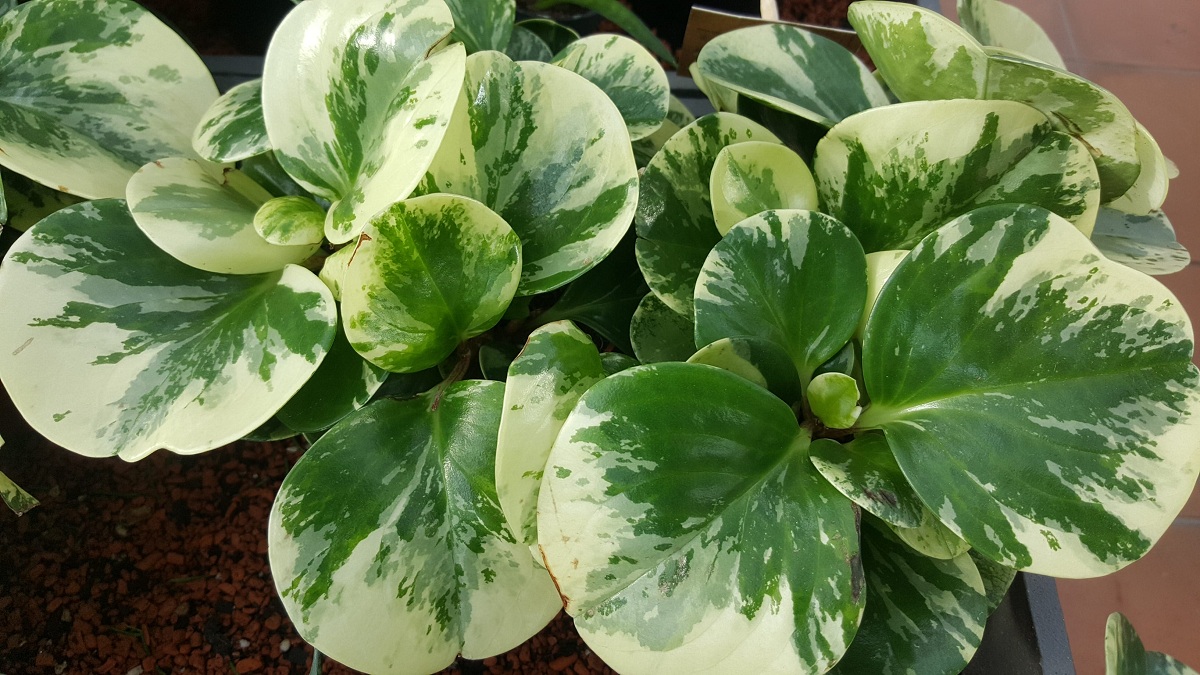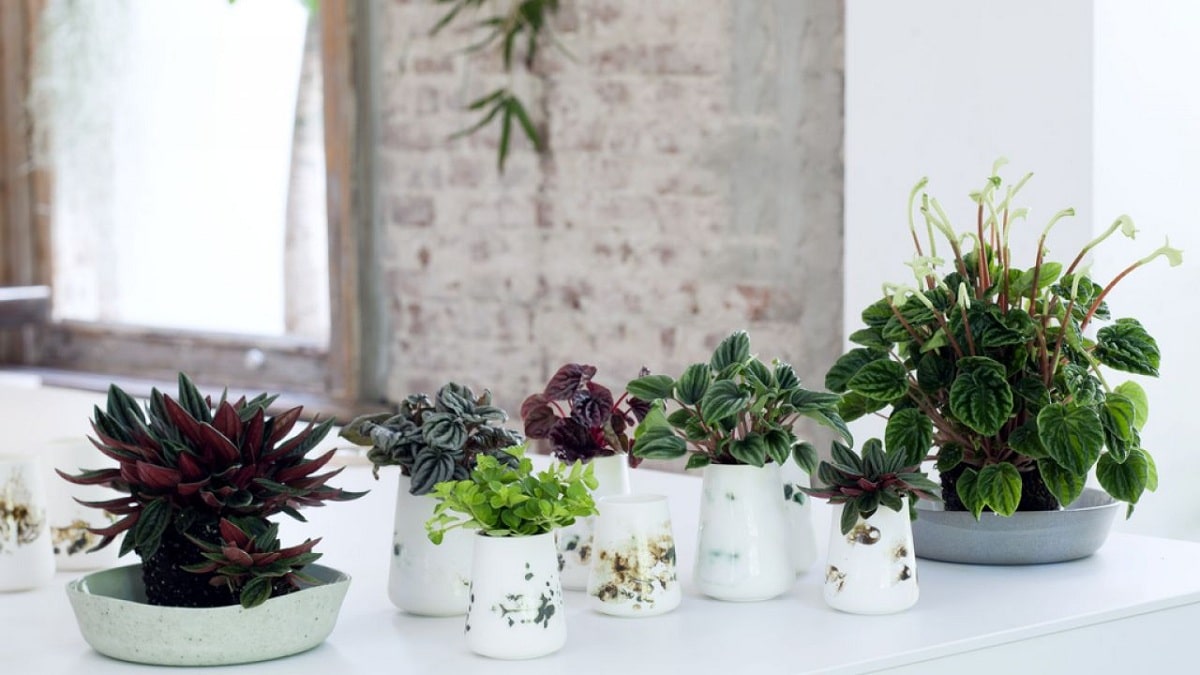
If you have ever gone to a nursery and visited the indoor plant greenhouses, it is likely that you have come across some very interesting plants: the Peperomia. They can often also be found for sale in local markets, as they have a high ornamental value, making it difficult to resist the temptation to buy at least one.
Therefore, in this article we are going to tell you all the characteristics, properties and care of peperomia.
Key features

They have a delicate appearance, so much so that we might think that they are very fragile. But the truth is that, although they are a little more demanding than conventional indoor plants, their care is suitable for everyone, regardless of the experience they have in plant maintenance. It is a plant native to the tropical and subtropical regions of the Pacific Ocean area. It belongs to the Piperáceae family and they are plants with fleshy leaves.
The leaves of this plant vary in colors from one species to another. However, they all stand out in that they have a great showiness. In this case, what helps the interior decoration of this plant are not its flowers, but its leaves. The set of several species belonging to the group of peperomias can help to generate beauty in the interiors. They are plants that do not develop too long stems, but grow by increasing the size of the leaves.
The flowers are insignificant and do not have an ornamental appearance. They grow together in white spikes and are very small in size. This plant is used as an indoor plant, although in summer it is advisable to put it outside. It is a plant that should not get the leaves wet and if we have it indoors, it must be placed in a well-lit place but without the sun's rays falling directly on the leaves.
Peperomia care

In order to provide them with the best care, it is important to know where they originate from. Well, these plants grow in tropical and subtropical regions around the world, especially northern South America. Taking this into account, we already know that they are very sensitive to cold and frost, so we have to find them a bright corner but without direct sun in our home where they are protected from drafts (both cold and warm), and in where temperatures stay above 10ºC.
The ambient humidity will also have to be high, so we will put the pot on a plate with damp decorative stones, or glasses or bowls with water around it. I do not advise you to spray them, since the leaves could rot easily.
If we talk about irrigation, it will have to be very scarce. The leaves store a lot of water, so if we go overboard with watering, we can lose it. So we will water very occasionally: once every 7-10 days in summer, and every 15 days in winter. It is better to go thirsty than to have the substrate flooded. We can also take advantage of it to pay it with a liquid fertilizer during spring and summer.
And by the way, if you see that roots are growing out of the drainage holes or that it is starting to get too "tight", change the pot in spring. Use a porous substrate, such as black peat and perlite mixed in equal parts.
Tips on Peperomia

Since they have great beauty, it is not only interesting to use it in isolation. It is interesting to put them together as another set of varieties to create a nice contrast. If we buy this plant in a garden center, we must make sure that the leaves are fresh and their shape is compact. It is essential to check before buying that it does not have any pests. You have to look closely at the underside of the leaves, on the stems and near the substrate.
If you have nothing to give away to those people who have a good taste for plants, Peperomia is one of the best options. Although it has some somewhat more complex care, it is ideal for all those who want to start growing crops at home. In this way, they are able to learn to take care of somewhat demanding plants in order to learn all the fundamental aspects.
Since it likes to grow and develop in shady places, it is an ideal plant to grow indoors. As we have mentioned before, to make this plant last quite a long time, It is essential that it does not get direct sunlight. The ideal location is near the windows in the case of south orientations. By simply keeping the soil moist and not puddling the substrate, we can avoid fungal diseases.
If we want to keep this plant well nourished at all times, it will need some fertilizers. The peperomia needs a liquid fertilizer such as humus but in few doses. They usually need a thin layer of half a centimeter of humus on the ground to nourish it well. The compost season is more advisable to do it in spring.
Reproduction, pests and diseases
If we want to reproduce the peperomia we must take some aspects into account. The first thing is that this plant begins to have small shoots around it. These shoots can be separated very carefully so as not to break them. The shoots have their own small rootlets and then these shoots have to be placed in a light substrate. To place in pots we can use a pot with vermiculite or perlite. We will keep it here until they can be established independently.
On the other hand, we can extract a leaf from the mother plant and keep it in water until it takes root. The plant can then be established in light, fertile soil. In this way it is much faster to germinate than from its seeds. Since the peperomia prefers to have humidity and shade, it is important to know that the climate should be with low temperatures as far as possible. This is because the low temperatures and helps its stimulation process in vegetative growth for when the spring time arrives.
They are not usually affected by pest problems. The only one that can attack is the shell. If the summer is too hot and dry, the Red spider it can also be a problem.
I hope that with this information you can learn more about peperomia and its care.
Hello, if I water by dish, how long should I leave the dish to absorb water? , and how big the plate should be in relation to the pot. For example, an African violet is watered through water in a dish only 20 minutes in summer every 7 days and in winter every 15 days. Relationship days / time if it does not rot root / plant.
Hi Aixa.
If the pot is 10,5cm in diameter, you can put a 11cm plate, maximum 12cm in diameter. You have to leave the plate for about 15 minutes.
A greeting.
The information is very good, because if I was needing that care, thank you
Thanks Jenny.
I am having some other problem with the peperomias, hence I was looking for how to water them correctly. And I find that you are the only one who says not to pulverize the leaves (everything I've read on other sites they say yes) ... so right now I don't know what to do about it. What do I do: do I spray or not?
For the record, you're the only one (also) I've asked what to do.
Thanks for the help ... always.
Hi Chesana.
No, I do not recommend spraying as the leaves could easily rot.
To avoid problems with watering, you must buy the humidity of the soil, and for this you can weigh the pot once it is watered and again after a few days. As dry soil weighs less than wet soil, it is a difference in weight that can serve as a guide.
If you have a plate underneath, remove the excess water within ten minutes of watering.
A greeting. 🙂
Hello, how are you? I have a tristachya peperomia and I see that its leaves are curled up, I don't know if it is due to lack or excess of irrigation! Greetings.
Hello Angie.
Do you have it in a bright place and protected from the cold? If so, it will be a watering problem, as you say.
To find out, I recommend you check the humidity of the earth. To do this you can insert a thin wooden stick (if it comes out with a lot of adhering soil, you don't have to water it), or weigh the pot once watered and again after a few days (as wet soil weighs more than dry soil, and This difference in weight can serve as a guide).
A greeting.
Hello!! I have acquired a Peperomia today and I would like to know if when changing it to a pot, it has to have specific characteristics such as a hole or something like that. Thanks!!
Hello Alvaro.
Yeah right. The pot has to have holes so that the excess water can escape, otherwise the plant will not be able to survive.
To improve drainage, I recommend putting a layer of volcanic clay or pebbles first, so that the roots will not be in contact with the water much.
A greeting.
Good afternoon, I have a pepemia that I bought two months ago. I water it every ten days. My query is why the leaves and flower are bent. It is in my window sunlight but not the rays of the sun. I live in Lima. Thanks for the reply.
Hi Gladys.
If it is next to the window, the light that enters through it can burn the leaves, since it makes the magnifying glass effect.
I recommend moving it further away from the window, so it will surely recover.
A greeting.
Hello. I have two peperomias that have practically lost their leaves. They tell me that it may be excess water, but I would like to know if its recovery in spring is possible or I give it up for lost.
Hi Marisa.
Peperomia are very sensitive to excess water.
If you are in Spain and since we are in winter the chances of it surviving are low 🙁
Do not water it only once a month and wait.
Good luck.
Hello!! I have a peperonia and I don't know why the leaves are falling off ???
Hello Ana.
It can be due to cold, excess or lack of water.
The article explains how to take care of it, but if you have questions you can contact us.
A greeting.
I have a peperonia and it has yellow leaves and they fall off what can I do
Hello Andrea.
It may be that it lacks light (not direct sun) or that it has excess water.
It is important to put it in a bright area and water it little, 2 times a week at most in summer.
A greeting.
Let's see. How can you say at the beginning of the text that Peperomia is suitable for everyone to say a few lines after that, be careful with spraying it, be careful with the water if you go overboard, be careful with this, be careful with the other? Because it is NOT a plant for beginners. Point. You have to know what to write
Thank you very much for the information. I learned a lot! My peperomia is beautiful, but I have it on the patio.
And it has endured even the low temperatures of winter.
Thank you for comment. And enjoy your plant 🙂
Hi! I have a variegated peperomia and out of nowhere it started to lose some leaves (I'm in Argentina, spring at the moment). With new ones, the stem turns brown and is "cut" from the base. And with the oldest and largest they just fall off. That could be happening?. Thanks!
Hello Nadia.
We need a little more information to help you:
- Does the sun or light give it directly?
-How often do you water it?
-Is it in a pot? And if so, does the pot have holes? Do you have a plate under it?
There are several possible causes: excess watering, sun exposure, a land that does not drain water quickly.
If you want, you can send us some photos of your plant to our Facebook.
Greetings.
Hi there! Valuable information, congratulations and grateful!
I would like to ask you, I have a Mirror Peperomia a few months ago, it has 3 very tall spikes that were its flowers and now there are only small "seeds" that stick to the touch ... My question is if it would do any harm to remove the spikes, in the same way already new ones are growing.
Thank you very much!
Hi Sebastian.
If they are dry you can cut them without problem, but if they are still green I would recommend you wait a bit.
It won't hurt much, but if they're green it's because the plant still feeds them.
Greetings.
Good day
I have my peperomia in the kitchen away from the window, the solar ray does not hit them ... I have watered it every 15 days but lately I have seen the watery leaves (weak) so I try to pour a little water every week and I have it held with a stick and some hooks to lift its leaves ... what do you advise me to do?
Hi Jacky.
Does your plant have a plate under it? Even if you water every 15 days, if that dish always or almost always has water, the roots will be flooded and they will die.
Therefore, after each watering it is important to drain the dish. This way you avoid problems.
But it may also be that when you water it you are not pouring enough water. You always have to add until the soil is well moistened, that is, until it comes out through the holes in the pot.
Greetings.